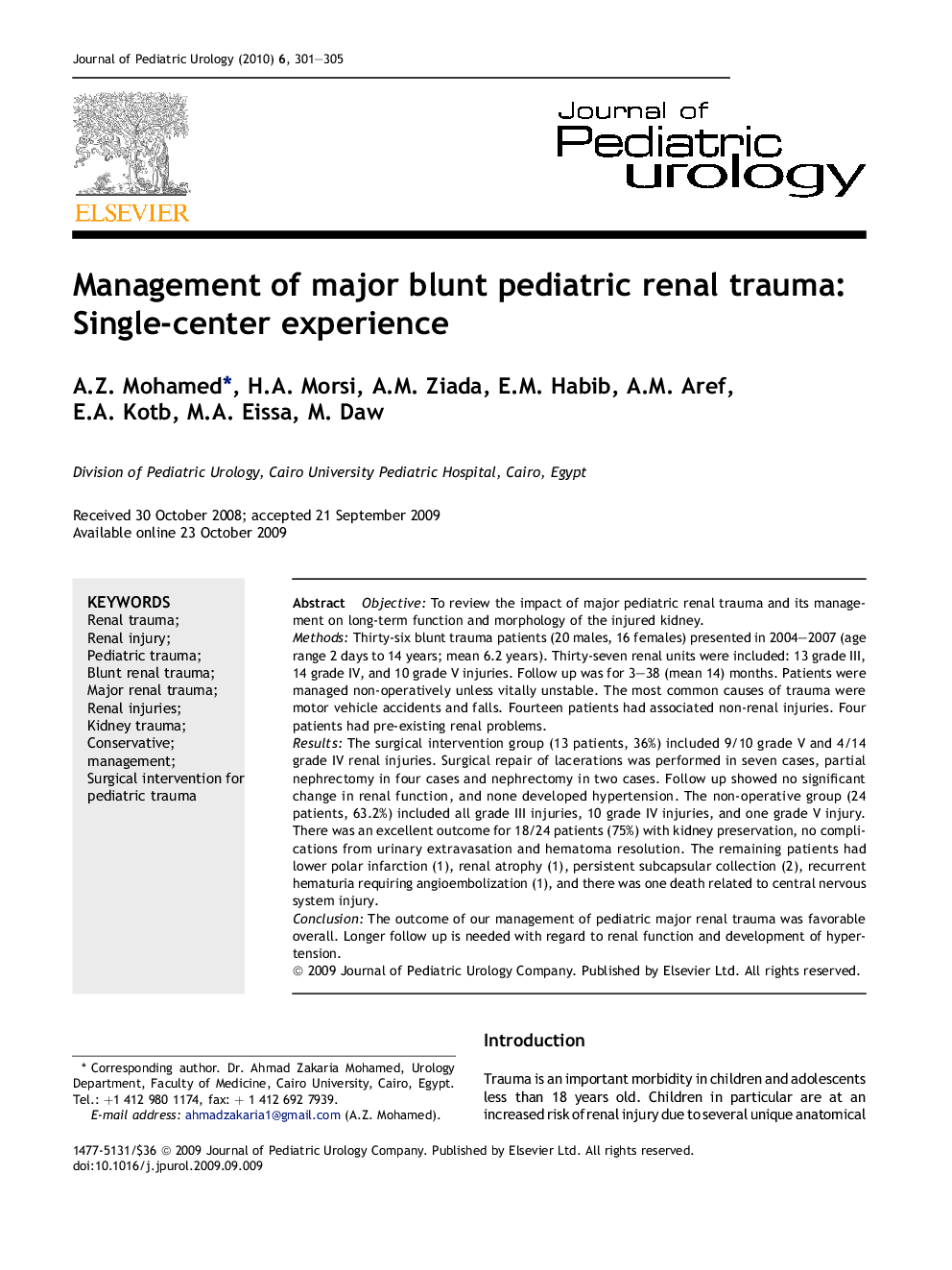| Article ID | Journal | Published Year | Pages | File Type |
|---|---|---|---|---|
| 4163015 | Journal of Pediatric Urology | 2010 | 5 Pages |
ObjectiveTo review the impact of major pediatric renal trauma and its management on long-term function and morphology of the injured kidney.MethodsThirty-six blunt trauma patients (20 males, 16 females) presented in 2004–2007 (age range 2 days to 14 years; mean 6.2 years). Thirty-seven renal units were included: 13 grade III, 14 grade IV, and 10 grade V injuries. Follow up was for 3–38 (mean 14) months. Patients were managed non-operatively unless vitally unstable. The most common causes of trauma were motor vehicle accidents and falls. Fourteen patients had associated non-renal injuries. Four patients had pre-existing renal problems.ResultsThe surgical intervention group (13 patients, 36%) included 9/10 grade V and 4/14 grade IV renal injuries. Surgical repair of lacerations was performed in seven cases, partial nephrectomy in four cases and nephrectomy in two cases. Follow up showed no significant change in renal function, and none developed hypertension. The non-operative group (24 patients, 63.2%) included all grade III injuries, 10 grade IV injuries, and one grade V injury. There was an excellent outcome for 18/24 patients (75%) with kidney preservation, no complications from urinary extravasation and hematoma resolution. The remaining patients had lower polar infarction (1), renal atrophy (1), persistent subcapsular collection (2), recurrent hematuria requiring angioembolization (1), and there was one death related to central nervous system injury.ConclusionThe outcome of our management of pediatric major renal trauma was favorable overall. Longer follow up is needed with regard to renal function and development of hypertension.
